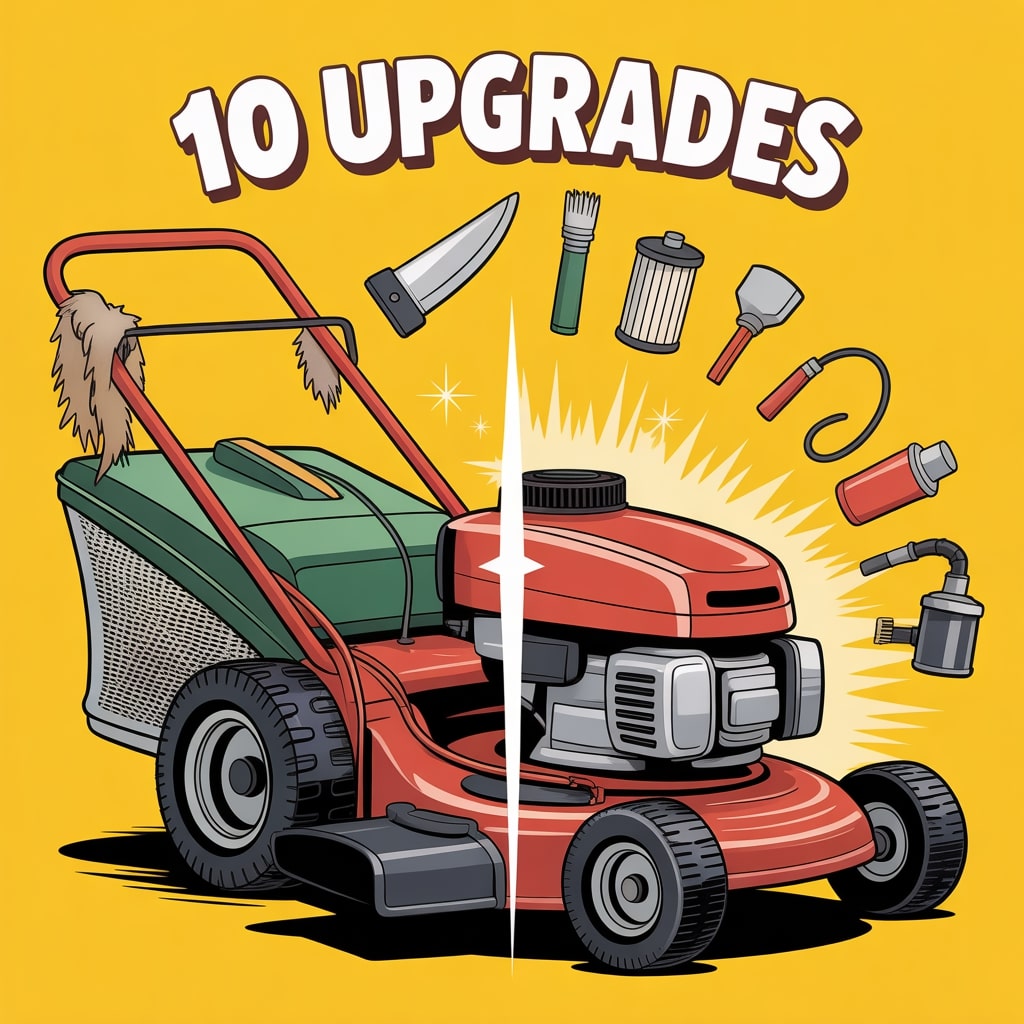
Let’s be honest… most “old” lawn mowers aren’t really broken. They’re just tired, clogged, gummed up, or held together with whatever bolts didn’t fall out in the last five summers.
And the funny part? Fixing one is usually cheaper than a Costco run.
Here’s the thing: a lot of folks immediately assume an old mower is junk just because it coughs once or leaves grass clumps all over the yard. But with a couple smart tweaks—and a few low-cost parts—you can take a beat-up machine and make it run cleaner than your neighbor’s brand-new big-box special.
Quick trick: If the engine sounds like it’s wheezing, check the air filter, the spark plug, or anything that affects airflow. Old mowers love to act dramatic, but they’re simple creatures.
Below is the first part of the how to restore old lawn mower journey. This whole guide is meant to feel like a neighbor showing you the ropes—not a textbook. Stick with it, and that rusty machine might surprise you.
Before we start cracking things open, let’s talk about why saving an old mower is usually the smarter move…
Why Restore an Old Mower Instead of Buying New?
Most folks don’t realize how strong these older engines really are. The steel decks are thicker, the parts are simpler, and the motors don’t freak out the second you mow a slightly wet patch. Nine times out of ten, restoring an older machine is cheaper and gets you better performance than grabbing whatever plastic mower is on sale at Walmart.
Why it’s usually worth fixing your old mower
Cost Effective
New mowers aren’t cheap. Even base models cost more than a weekend getaway.
Built to Last
Old engines are tough. They just need things like a clean carb, fresh oil, or a non-dull blade.
Upgrade Opportunity
You can upgrade performance while you fix it—like swapping to high-lift blades, better air filters, or stronger drive cables.
Affordable Parts
Parts are cheap. A new spark plug, blade, or carburetor is usually under $20.
Simple Fixes
Most “dead” mowers died from old gas, clogged carburetors, or grass buildup choking the deck—not from anything fatal.
Fixing vs. Replacing
| What’s Wrong | Easy Restore Fix | When You Should Replace |
|---|---|---|
| Thick smoke | Change engine oil + clean air filter | Cracked block (rare) |
| Won’t start | New spark plug, clean carb, toss old gas | Starter recoil destroyed |
| Leaves uneven cut | Sharpen blade, match tire pressure, clear deck | Bent crankshaft |
| Weak power | Replace air filter, unclog carburetor, clean cooling fins | Severe rod knock |
Fast check: If your mower has compression, spins freely, and isn’t leaking oil from the crankcase, it’s almost always worth restoring.
Just by reviving your older machine with a short lawn mower restoration routine, you can get the same results as buying new. The big upgrades—fresh mower blades, better airflow, cleaned carburetor, fresh engine oil, smooth drive cables, and a debris-free deck—make a night-and-day difference. This is why most people searching how to restore an old lawn mower end up shocked at how little work it actually takes.
What You’ll Need Before You Start (Nothing Fancy)
The simple tools and parts that make old mower fixes easy
Essential Tools for Mower Maintenance
A basic socket set (¼” or ⅜” works fine)
Flat screwdriver
Phillips screwdriver
Putty knife (the deck’s worst enemy)
Wire brush
Fresh spark plug
New air filter
A can of carb cleaner
Shop rag or old T-shirt
Pliers
Funnel
Fresh engine oil (SAE 30 or synthetic 10W-30)
Gloves (unless you like black fingernails for a week)
Fast check: If you don’t have carb cleaner, get it. Old mowers and dirty carbs are best friends… in the worst way.
A few “don’t skip these” items that people always forget
- Replacement mower blade if yours looks like it fought gravel
- Tiny wire or paperclip for cleaning out the carburetor jet
- Grease for the wheel axles
- New drive cable if your self-propel feels like it’s given up on life
- Fresh gas—seriously, toss the old stuff
Quick trick: If you hear the mower surge or “hunt,” you’re dealing with clogged fuel flow or a dirty carburetor. You’ll want that carb cleaner ready.
Simple table: Stuff you must have vs stuff that’s optional
| Must-Have | Nice Extra | Usually Not Needed |
|---|---|---|
| Carb cleaner | Torque wrench | Whole carb rebuild kit (unless carb is trashed) |
| Fresh spark plug | Synthetic oil upgrade | New engine (almost never needed) |
| New air filter | High-lift mower blade | Specialty puller tools |
| Putty knife | Wheel grease | Fancy blade balancer |
You don’t need expensive parts for a solid old mower upgrade. Ninety percent of the work is cleaning, tightening, sharpening, and replacing a few bucks’ worth of basics.
Once you’ve got these tools rounded up, you’re ready for the fun part—the actual upgrades. And trust me, these are the kinds of upgrades you feel instantly in the yard. Stronger cut, cleaner lines, no more bogging down in the thick grass, and way fewer “mower tantrums.”
Let’s start with the upgrade that makes the biggest difference… the deep clean your old mower has been begging for
10 Powerful Mower Upgrades That Bring an Old Mower Back to Life
How to Restore Old Lawn Mower
These fixes bring real-world results: stronger cuts, smoother running, less bogging in thick turf, and an overall mower performance boost that makes your old machine feel like it suddenly remembered what it was hired for.

What to do:
- Flip the mower carefully with the carburetor side up.
- Scrape all grass buildup with a putty knife.
- Knock loose clumps around the discharge chute.
- Use a wire brush to open airflow paths.
| Do | Don’t |
|---|---|
| Scrape with putty knife | Use screwdriver |
| Hose lightly | Pressure wash bearings |
| Check blade bolt | Flip carb-down |

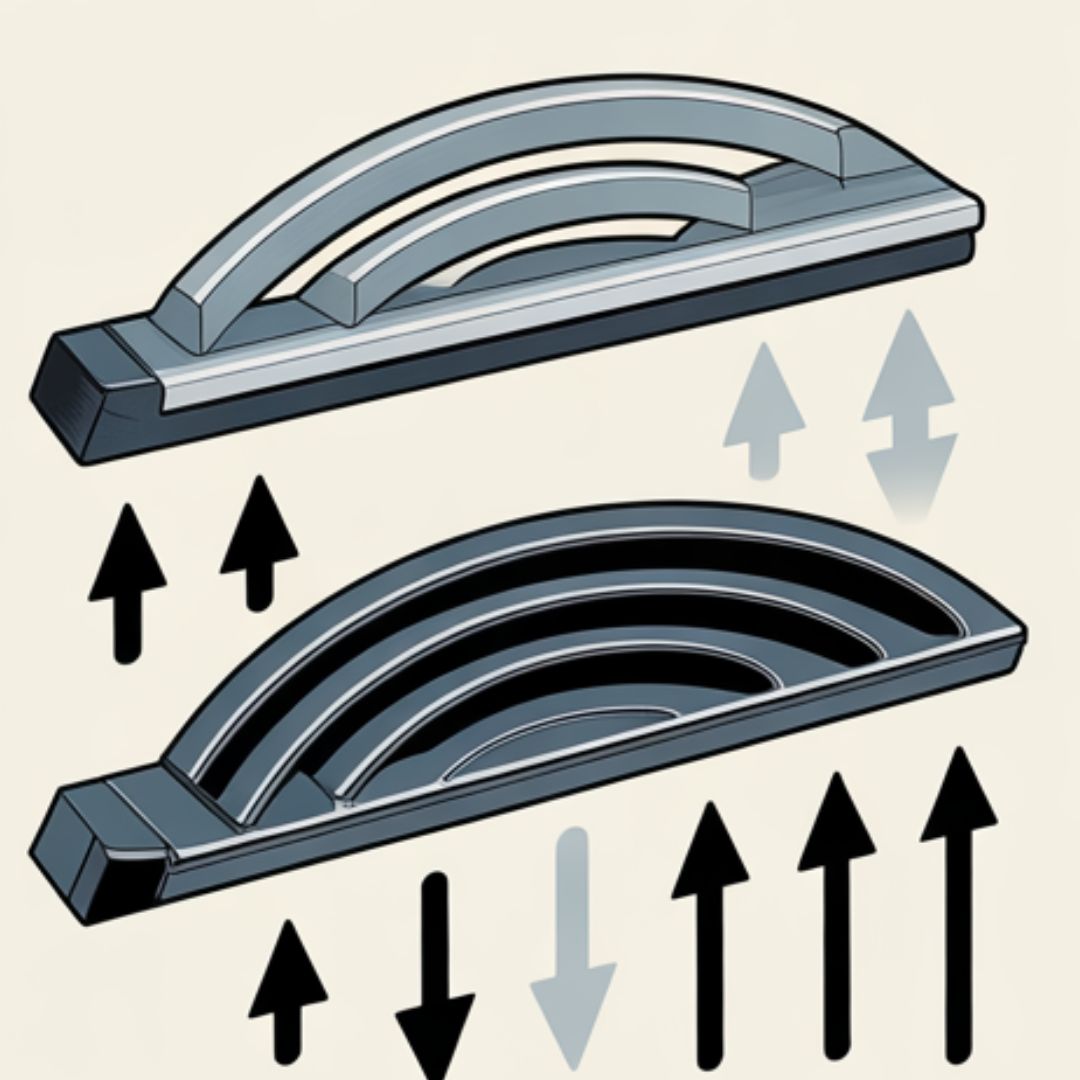
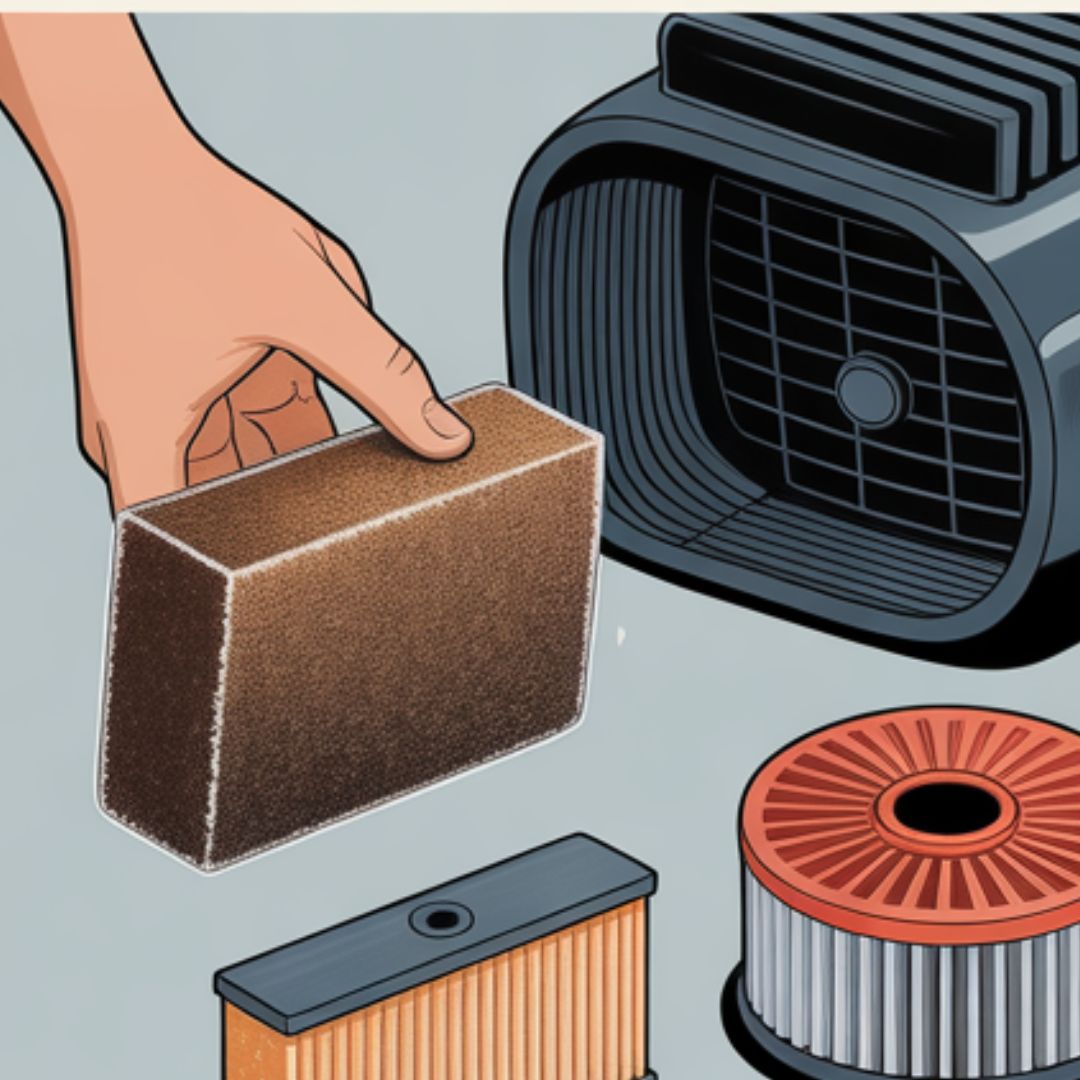
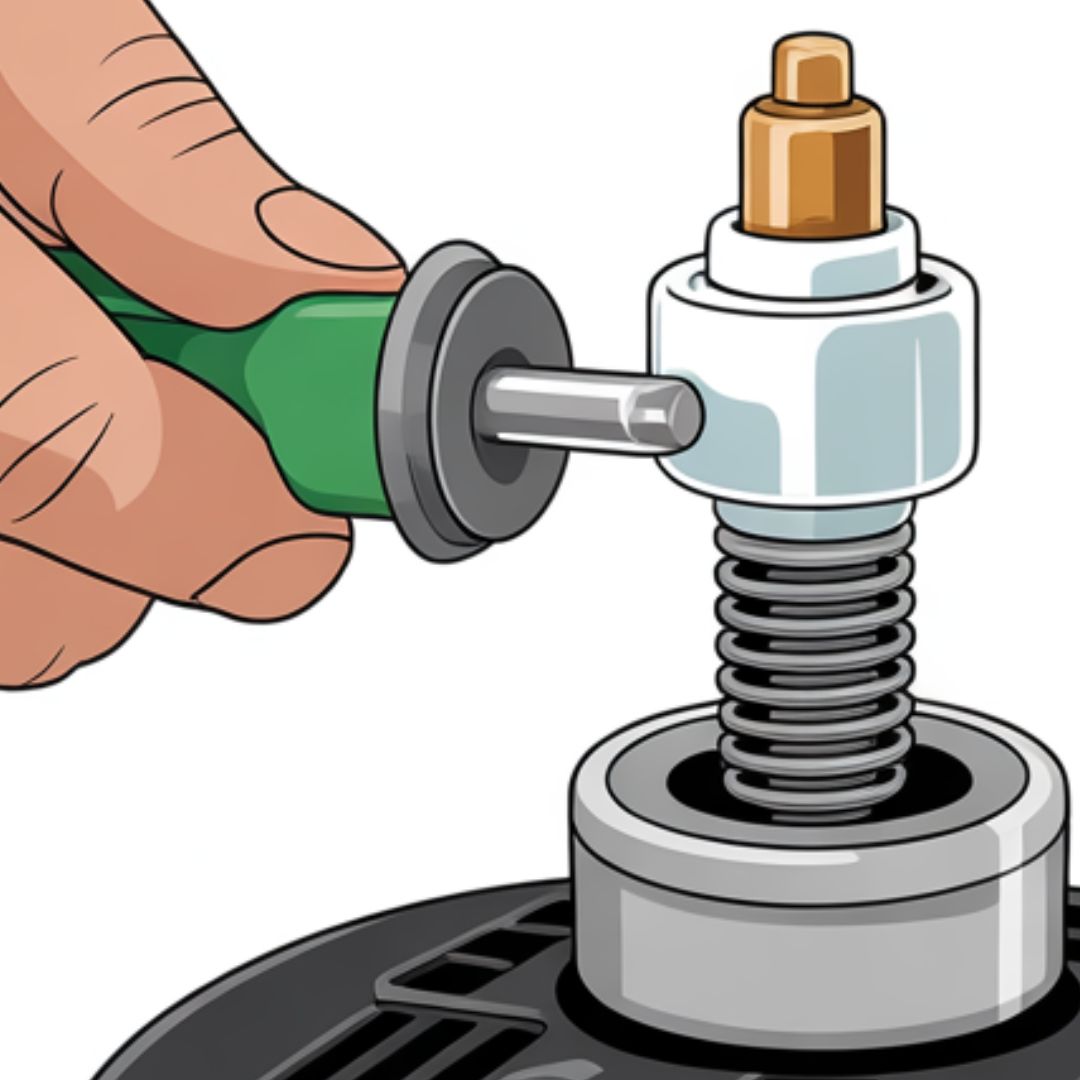
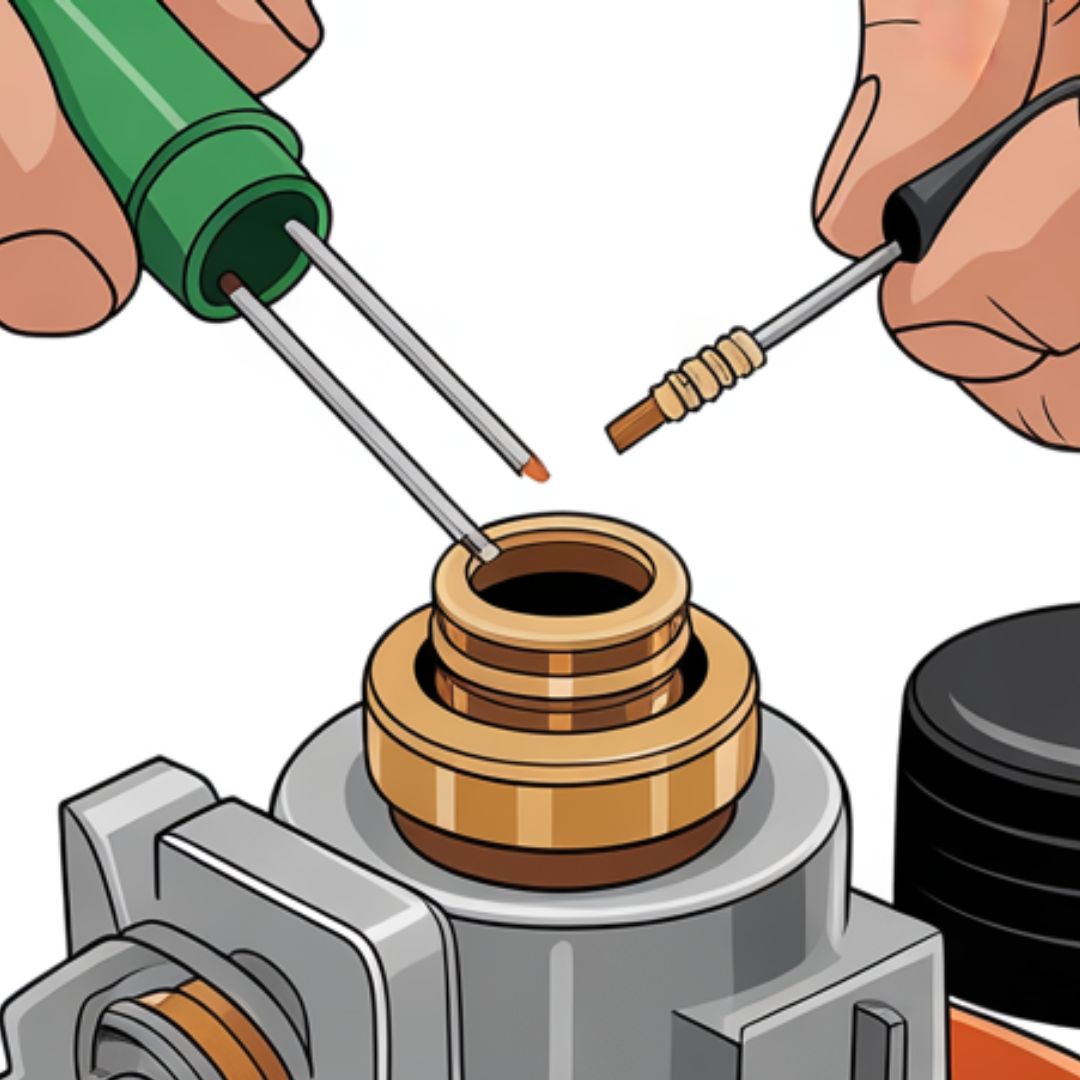
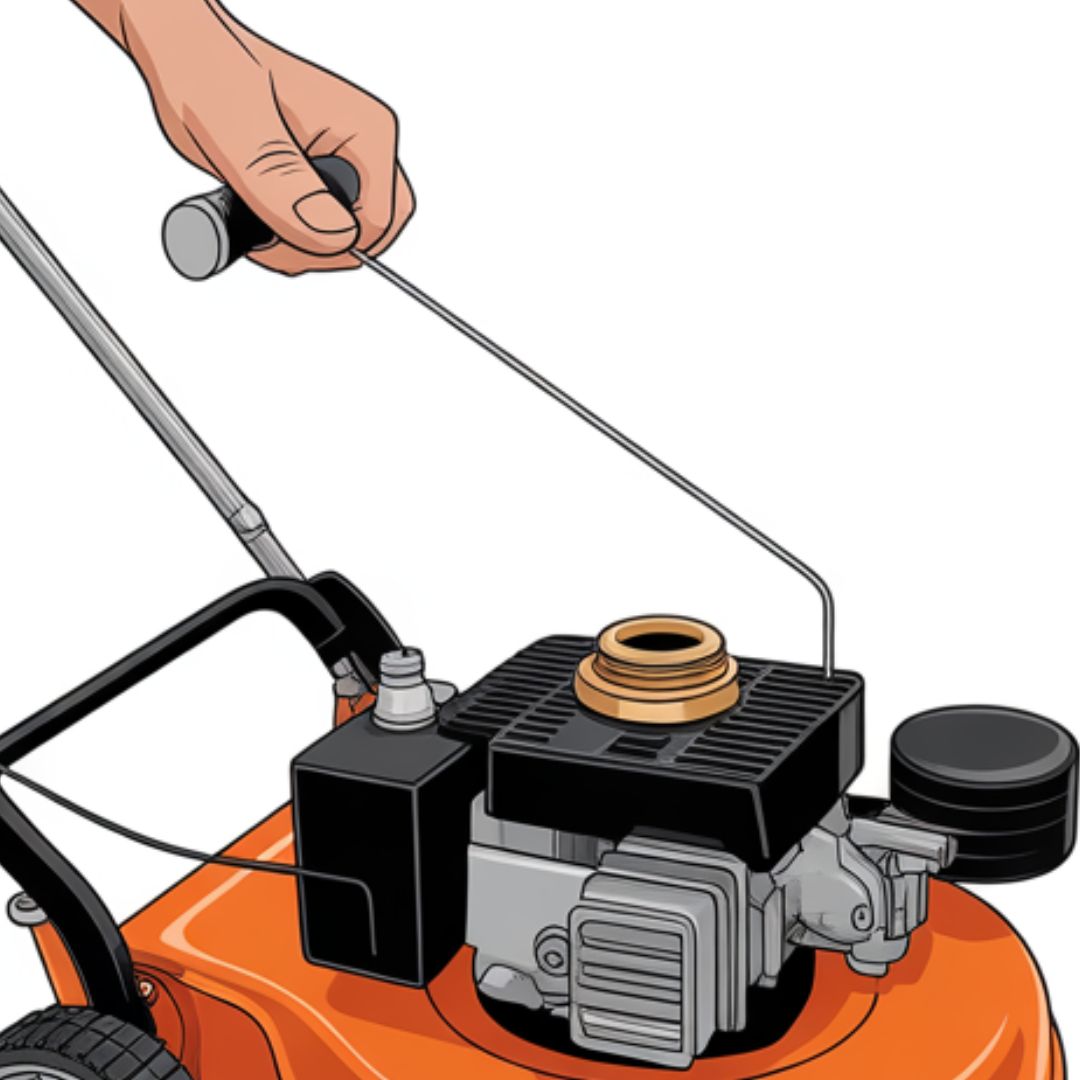
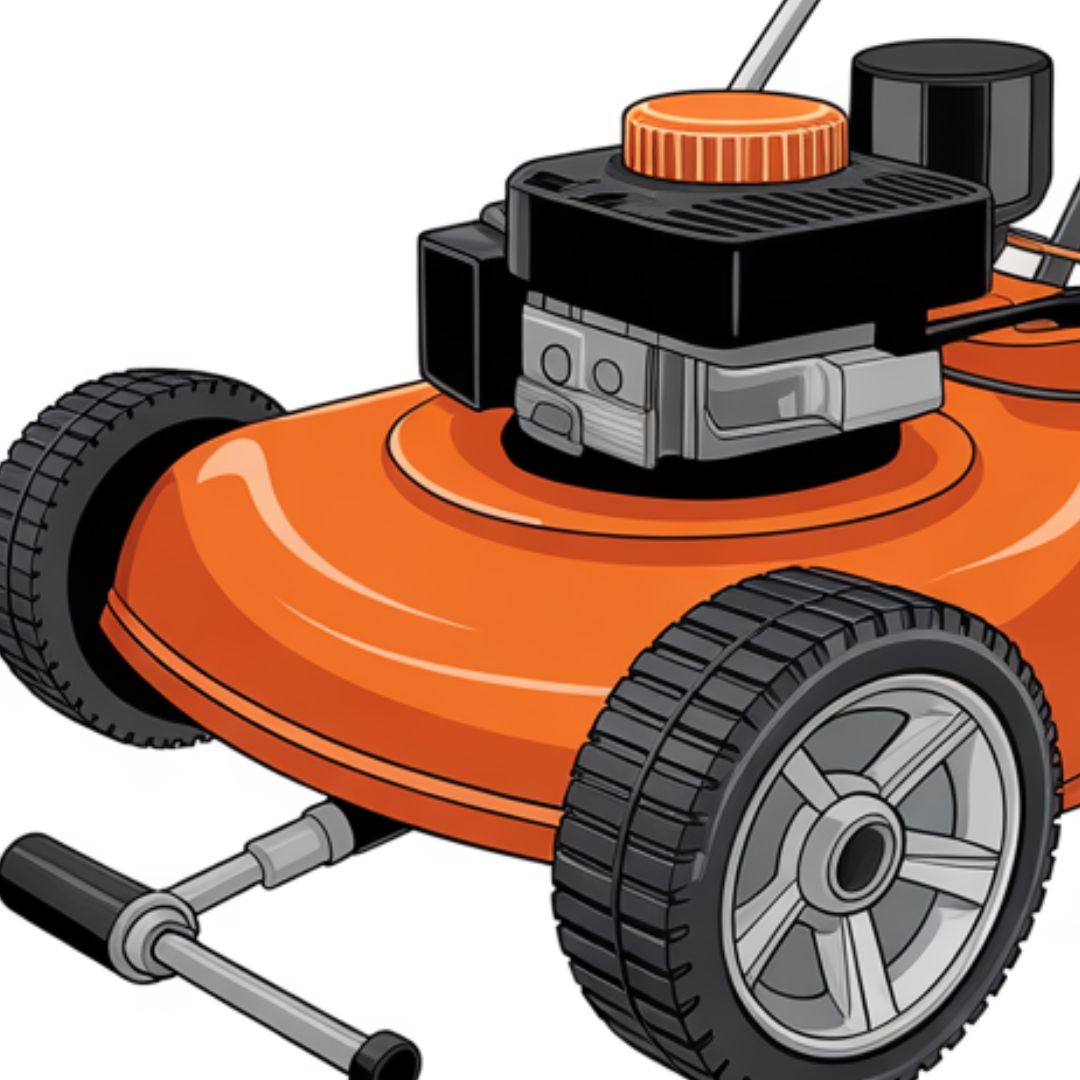
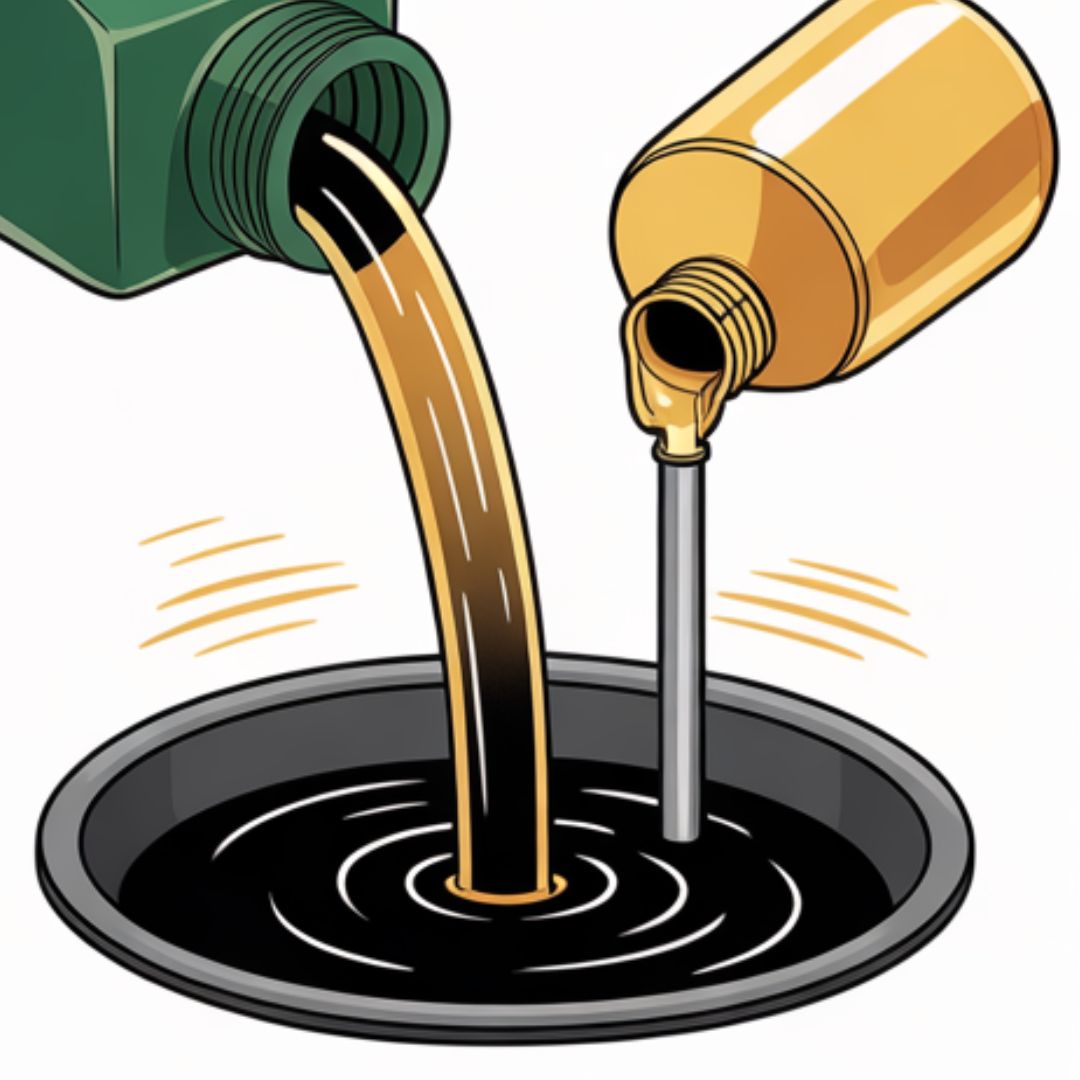
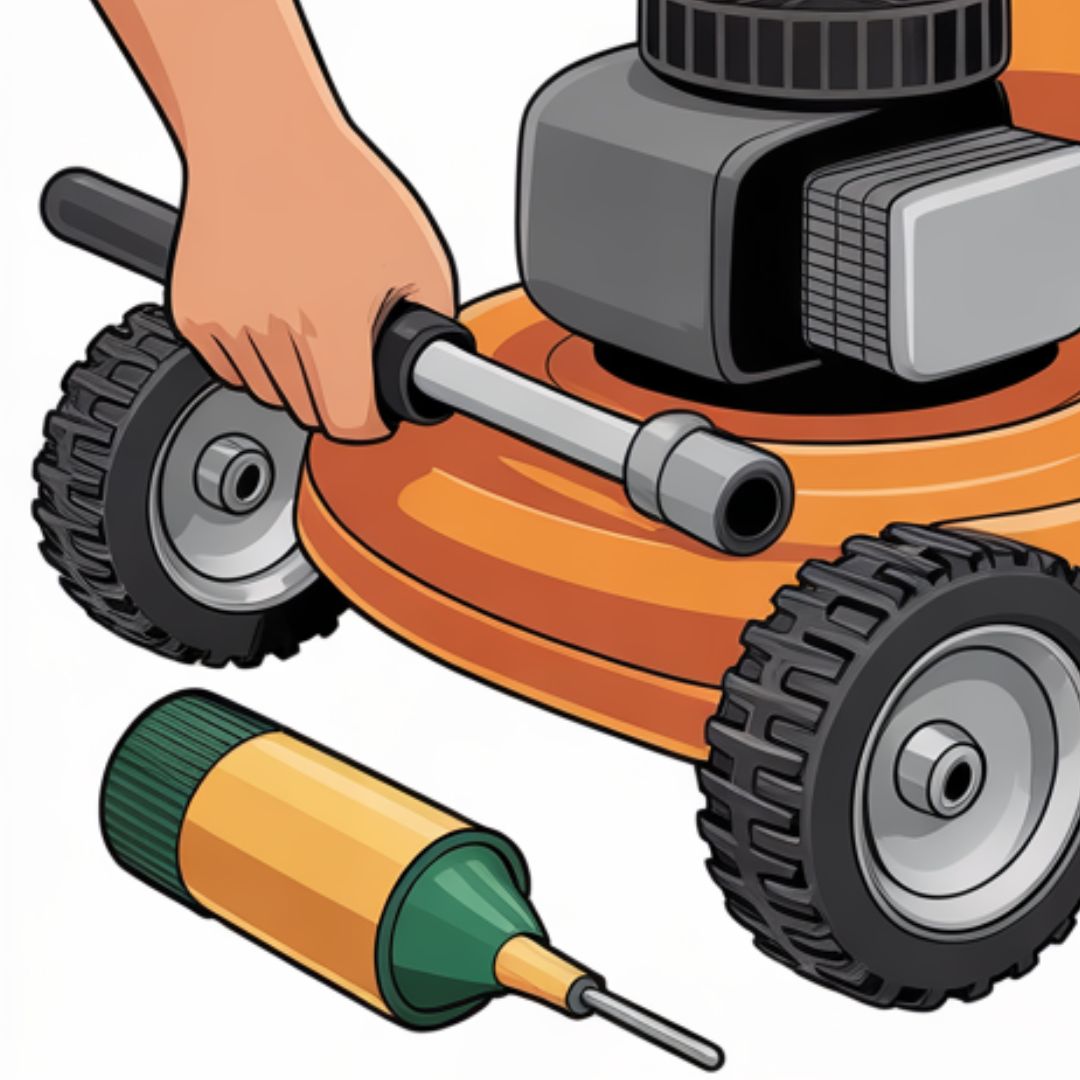
Optional Bonus Upgrades
(If You Want It to Feel “New-New”)
At this point, your old mower is probably running better than it has in years. But if you want it to look the part too — you know, like something you chose to own instead of something you dragged out of your uncle’s barn — these little cosmetic upgrades add that “new-new” feel without spending real money.
Think of this as the fun part of an old mower overhaul. Performance is already fixed; now we’re just giving it a glow-up.
A few easy upgrades that make the mower look fresh again
- New handle grips (the old ones always feel like sticky Tootsie Rolls)
- Rust removal + a quick hit of black Rust-Oleum
- Fresh screws/bolts where rusty ones look embarrassing
- Repaint the deck if the color’s sun-faded
- Replace faded warning stickers
- New fuel cap if yours is cracked or leaks
- New wheels if the plastic is worn or faded
Most people miss this: Painting the deck doesn’t just look better — it slows down rust. A $6 can of paint adds another few years of life, no joke.
examples you’ll recognize
- “I once rescued a mower that looked like it mowed the Titanic. Cleaned it, painted it, slapped on new wheels — you’d swear it was a $300 machine.”
- “Most old fuel caps crack from sun exposure. Replacing one kills gas fumes and makes people think you actually maintain your stuff.”
- “Those faded stickers? You can buy replacements on Amazon for a few bucks. Looks factory fresh.”
Quick tip
If you do repaint the deck, sand lightly first. Thick rust flakes come off easier than you think.
Alright — now that the mower’s looking sharp, let’s talk about something most guides forget: U.S. regions matter. How you restore and maintain an old mower in Arizona is NOT the same as how you treat one in Ohio.
Region-Specific Tips (Because U.S. Lawns Age Differently)
Different parts of the country beat up mowers in different ways. That’s why some lawn mower upgrades last longer in one region and get wrecked faster in another. Climate absolutely affects how your mower ages — heat, dust, humidity, wet springs, all of it.
Here’s the quick rundown every homeowner should know, written from real yards, not theory.
Select your state to highlight your region and get climate-specific maintenance tips.
South
(TX, GA, FL, AL, SC, NC, LA, MS, AR, TN, KY, VA, WV)
Hot, dusty, humid. Mowers down here work harder than a leaf blower in fall.
How the South beats up mowers:
- 💨 Dust kills air filters fast — upgrade to a dual-layer filter if possible.
- 🛢️ Use synthetic oil; the heat punishes older engines and thin oil breaks down quicker.
- ❄️ Clean cooling fins every few mows so the engine can actually shed heat.
- 🧽 Watch for grass sticking to the deck from humidity — clumps kill airflow.
Fast check:
If your mower loses power in summer heat, clean the cooling fins and swap the air filter. It feels like magic, but it’s just airflow and cooling doing their job again.
Midwest
(IL, OH, MI, WI, MN, IN, IA, MO, ND, SD, NE, KS)
Wet springs + thick turf = nonstop grass buildup under the deck and hard-working engines.
How the Midwest beats up mowers:
- 🧽 Clean the deck more often than you think — wet cool-season grass packs in fast.
- ⚔️ Keep a high-lift blade for thick cool-season grass to maintain strong lift and cut quality.
- 🛞 Watch wheel bearings — constant moisture and soggy soil eat them alive.
- 🛢️ Change oil after the spring rush; engines work extra hard early in the season.
Reality check:
Midwest yards are gorgeous… but they stick to every inch of your mower. Expect more cleaning and more maintenance, but also some of the best-looking lawns when you keep up with it.
Northeast
(NY, PA, NJ, MA, CT, RI, VT, NH, ME, DE, MD)
Dewy mornings, thick turf, and leaves everywhere — the Northeast never takes it easy on old mowers.
How the Northeast beats up mowers:
- 🌫️ Never mow in early morning dew — wet grass clogs everything from deck to chute.
- 🔌 Keep spare spark plugs; fall leaves and heavy mulching foul plugs faster.
- 🍂 Use mulching blades for fall leaf cleanup — they chew leaves instead of just throwing them.
- 🧱 Deck rust is common — repaint or touch up every couple of seasons to keep it from rotting through.
Quick trick:
Mulching blades save you from bagging leaves. Your back will thank you, and your mower will actually handle leaf season better.
Pacific Northwest
(WA, OR, coastal AK-style climates)
Rain, moss, and more rain. If it can hold moisture, it will — including your mower.
How the PNW beats up mowers:
- ⚔️ Sharpen blades often; moss dulls them way faster than plain turf.
- 🧱 Decks rust quicker — clean them and repaint regularly to fight moisture.
- ⛽ Keep the carb clean; moisture loves to sit in fuel tanks and cause varnish and corrosion.
- 📄 Foam air filters clog like crazy here — use paper filters for better performance and easier swapping.
Most people miss this:
Moss absolutely destroys blade edges. In the PNW, sharpen way more often than you would in dry states.
Southwest
(AZ, NM, NV, UT, CO, WY, ID, MT, inland CA)
Dry, dusty, hot. Your mower basically works inside a hair dryer.
How the Southwest beats up mowers:
- 💨 Clean the air filter every — single — mow. Dust here is brutal.
- 🛢️ Use synthetic oil to handle high heat and keep old engines alive longer.
- 🧩 Keep a spare carb bowl gasket; rubber and seals dry out faster in this climate.
- 🧹 Deck stays cleaner because grass is thin, but dust gets into every other crack and crevice — blow everything off after mowing.
Real example:
I’ve seen Southwest mowers go through filters faster than some people go through coffee pods. The climate isn’t subtle about it.
Troubleshooting Mini-Section
(When Your Old Mower Still Feels Tired)
Even after a full old mower overhaul, sometimes the machine still acts weird — rattles, shakes, bogs, sputters, or starts complaining louder than a teenager waking up early. Don’t worry. Most of these issues are super common on older mowers and take just a minute to diagnose.
Mower Rattles
Cause: Almost always a loose blade bolt.
Quick checks:
- Grab the blade (with gloves) — any wiggle = tighten it.
- Check deck bolts.
- Check for wobbly wheels.
Shaking or Vibrating Like Crazy
Likely causes:
- Bent mower blade
- Missing blade washer
- Worn wheel bushings
- Big grass buildup on one side of deck
Fast fix: Flip mower carb-side up → scrape underside.
Engine Surging (Revving Up & Down)
Likely causes: dirty air filter, gummy carb jets, stale gas, loose bowl screw.
Easy test: Spray carb cleaner around intake — if idle changes, gasket leaks.
No Power in Thick Grass
Check these:
- Using high-lift blade?
- Clogged deck?
- Choking air filter?
- Fuel cap vent blocked?
- Dull blade?
Quick trick: If it bogs instantly, blade isn’t lifting grass enough.
Starts but Dies After 10–20 Seconds
99% causes:
- Dirty carburetor bowl
- Bad spark plug
- Old fuel
- Cracked fuel line
- Water in gas
Mower Won’t Start At All
Start with what actually fails:
- Spark plug wire loose
- Fuel not reaching carb
- Plug badly fouled
- Air filter clogged
- Safety bar cable snapped
Quick trick: Spray carb cleaner in intake.
- Starts for 1–2 sec → fuel problem
- No start → spark or compression
Uneven Cut
Check:
- Equal tire pressure
- Bent blade
- Worn front wheels
- Uneven height settings
- Grass buildup under one side
Fast fix: Match front L/R wheel height FIRST.
Burning Smell
Common causes:
- Belt drag (self-propelled)
- Loose drive cable
- Grass jammed near muffler
- Dirty cooling fins
- Low oil
FAQs
Is fixing an old mower worth it?
Yes — most “dead” mowers just need love.
Fresh oil, plug, clean carb, sharp blade = revived machine.
If it has compression and no knocking, it’s worth fixing.
Cost to rebuild a mower?
Usually $25–$60 total:
• Plug: $4–$6
• Air filter: $5–$12
• Carb cleaner: $4
• Blade: $15–$25
• Oil: $5–$8
• Drive cable (maybe): $10–$15
Cheaper than ordering pizza.
First thing to check?
Air filter, spark plug, old fuel, carb bowl, blade bolt.
Fast trick: pull the spark plug — it tells the whole story.
Won’t start after winter?
Old gas — basically guaranteed.
Dump fuel, clean carb, fresh plug, new filter if needed.
Mowers sit for years and still revive with a carb clean.
Can old gas ruin a mower?
Yep — old gas gums up everything.
Clogs jets, corrodes bowl, ruins idle.
If it smells like varnish, dump it now.
When is a mower “too far gone”?
Walk away if:
• Cracked block
• Bent crankshaft
• Zero compression
• Oil behind flywheel
• Rod knocking
• Deck rusted through
No? Then it’s fixable.
Why does it rattle when I turn?
Loose blade bolt or bent blade.
Sometimes a worn wheel bushing.
Fast fix: tighten the blade.
Sharpen or replace blade?
Dull → sharpen.
Chipped, bent, cracked → replace.
Cracked blades at 3,000 RPM = flying weapons.
Is synthetic oil good for old mowers?
Yes — cooler temps, better protection.
Great for Southern heat or thick lawns.
Instantly smooths out old-engine noise.
Why does my mower shake?
Bent blade, loose bolt, or clumped grass.
Clean the deck. Check the blade.
Shaking almost always starts down there.
Conclusion
Restoring an old mower isn’t some big dramatic project — it’s basically giving the machine the tune-up it should’ve gotten years ago. A lot of folks toss out mowers that still have plenty of life left in them. Meanwhile, a simple clean-out, a sharp mower blade, a fresh spark plug, and a clear carburetor bring 90% of “dead” machines back like nothing ever happened.
Once you do these lawn mower upgrades, you’ll see it immediately: cleaner stripes, fewer bog-downs, smoother idle, and way less shaking. And the best part? You don’t need a fancy shop or a wall of tools — just the basics, some patience, and the willingness to scrape a little grass buildup off the deck.
If you’ve got an old mower sitting in the corner of the garage, don’t panic and don’t trash it. Give it an honest shot. These machines are tougher than people think.
- Old mowers aren’t junk; they’re just clogged, dull, or ignored.
- A fresh air filter, spark plug, and clean carburetor fix most power issues.
- Scraping the deck restores airflow and cuts better than people expect.
- Sharp blades = clean lawn. Bent blades = vibration city.
- Synthetic oil makes tired engines run smoother and cooler.
- Loose bolts are the #1 cause of shaking — check the blade bolt first.
- Region matters: dusty South, wet Midwest, mossy PNW, dry Southwest.
- Spending $25–$60 on tune-up upgrades beats spending $400+ on a new mower.
- Most “dead” mowers only die from stale gas and clogged carbs.
- If the engine has compression, it’s almost always worth saving.
If you’re staring at an old mower in your garage, try these fixes before you think about buying new. It’s cheap, it’s simple, and honestly—it feels good hearing an old engine fire up like it wants to work again.

I’m David man behind Lawn Mowerly; I’ve been dealing with lawnmowers and Tractors with my father since I was a kid. I know every make and model and what each one is capable of and love helping people find the perfect equipment for their needs.
